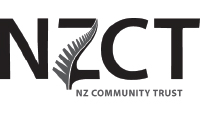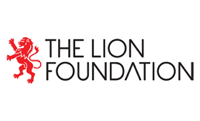The following information is designed to help you through a grant application process* noting that it does vary from funder to funder (whether they’re a Class 4 Gaming Trust, Community Trust, or Foundation).
*The information in this document is based on our own experience in applying for grants.
Before you start...
When applying for grants, ideally you want to put an annual plan in place outlining who you can apply to, for what, how much, and when.
Identify what funds you think you may be eligible for and make a note how many times you’re allowed to receive from each funder per year – for some, you can only submit one annual application and for others, there isn’t a limit. From here you can plan your application process and timeline.
Set up a ‘grants’ folder and keep all of your relevant documents in it (you’ll need this for the accountability stage if your application is successful).
Make sure you keep your plan up-to-date; it should be a constantly-evolving resource, not a static moment-in-time document.
Step one:
Ensure that your project fits with the Funder’s mission and/or their fund objectives and priorities.
Check that you meet any eligibility criteria e.g. location, non-profit, amount of reserves allowed etc. Sometimes you need to complete a pre-approval process before progressing to completing your application. Check if this is the case and allow for it in your timing as it can take a few working days to be approved and gain access to the application form.
Check the due date and aim to submit your application at least one week prior to this date (to enable the funder time to read it and come back to you if they have any questions or need further details).
Step two:
Make sure you read the funder’s website clearly, as each funder can require slightly different information. The information in this guide is a general starting point which should prepare you well to start applying.
Before you begin your application, make sure you have the following:
- Your Charities Commission number (if you are registered)
- Make sure that the organisation name you use on the application matches what is registered with your charities number. If it doesn’t match exactly, the online systems won’t accept your application.
- Some funders are now also asking for your NZ Business Number (if you have one)
- Bank account number and account name
- PDF copy of Bank deposit slip to attach to your application
- GST number (if registered)
- IRD number
- A list of your board or committee members’ names (date this document and keep it updated)
- Quotes dated within three months of the application on the supplier’s letterhead (with their contact details) and the word Quote on it.
- Most applications require (at least) two quotes. If you can’t provide two, or have a preferred supplier for a specific reason, provide a letter outlining the reasoning
- Signed resolution from your board or committee detailing who you are applying to funding to, for what and how much.
- Resolutions need to be signed by either one or two committee members (depending on the Trust’s rules) and dated within 3 months within date of the application.
In the application you will probably need to write:
- A succinct summary of the initiative(s) for which you are requesting funding
- Dates and details – how you are going to deliver the initiativeI(s)?
- The people/staff who will carry out the initiative(s)
- How much money you are requesting and for what period of time (it could be multi-year)
- The need for your initiative(s) and how you will be meeting this need
- The intended outcomes of your initiative(s) and how you will know that you have achieved these – how will you measure the initiative(s)?
- A budget breakdown including any other funding applied for/secured/what your organisation is contributing towards it
- How you intend to raise the balance e.g.registration income, sponsorship, other grants to be applied for, merchandise sales etc
- If you have funds available (reserves), why are they not being used?
- You might also be asked how the initiative will be financially sustained after the funding period
Collate the following and keep it on hand as most applications require this information:
- Your internal key contacts for applications e.g. you, CEO, Treasurer (full names)
- Some funders ask for proof of Identity (drivers licenses) of your two key contacts, have this saved on file ready to attach if needed.
- Charities registration number
- Incorporated Society number
- GST number
- Number of staff members
- Number of volunteers
- Date that your organisation was founded
- Bank and branch name
- The deposit slip that you attach has to be in the same name as the organisation name you’re applying under e.g. it can’t have your trading name on it and your application has your legal name.
- Brief overview with key messages about your organisation
- g. Nuku Ora is a Regional Sports Trust which promotes, develops and supports sport, health and active recreation in the greater Wellington region. Nuju Ora is committed to everyone in the greater Wellington region having a life-long involvement in sport and active recreation.
Save documents as pdf files so that they’re easy to upload.
Step three:
Check that you have provided all the necessary information and ensure that you have attached all of the required documents. Most funders provide a checklist at the end of their application for you to go through.
Hit submit!
Most funders will then send an email advising that your application has been successfully submitted and advise of the date when it will be reviewed. Make sure that you have received this email and follow up if this is not the case.
Take a copy of your application and save it in your ‘grants’ folder.
Prior to the close-off date, the funder may contact you for additional information or to query an answer. This might feel like a ‘test’ but they’re just trying to get everything right before it goes in front of their assessor panel/board. Don’t be afraid to ask questions if you’re unsure as to what they need/are asking for.
These questions can assist you with writing your next application as you now know the level of detail that a funder requires.
Approved or declined
If you are declined, depending on the reason, you can resubmit and try again, and/or try another funder. Reasons can vary from ‘insufficient funds in this round,’ or ‘did not meet criteria’, to ‘incomplete application’ – this is why you want to submit it early so they have time to come back to you if they notice that you’ve missed something off.
Don’t let declined applications put you off from applying! It happens. Use any feedback that you have received to adjust your application and/or the project (if possible) to meet the funder’s requirements.
If you have been approved, the funder will transfer the approved amount into your bank account on a certain date (outlined in the email you receive).
Some funders require you to go into their system and accept the approval before the funds will be released – so make sure you read the letter/email properly and see if any action is required of you!
If approved, you will need to submit an accountability report after your event/initiative has taken place. Make sure that you do this, and in a timely manner. If you don’t do it, you are very unlikely to receiving funding from that Trust again in the future. Funders are audited and if you don’t submit your accountability report, it makes things difficult for them.
If you have any further questions you can email info@nukuora.org.nz









